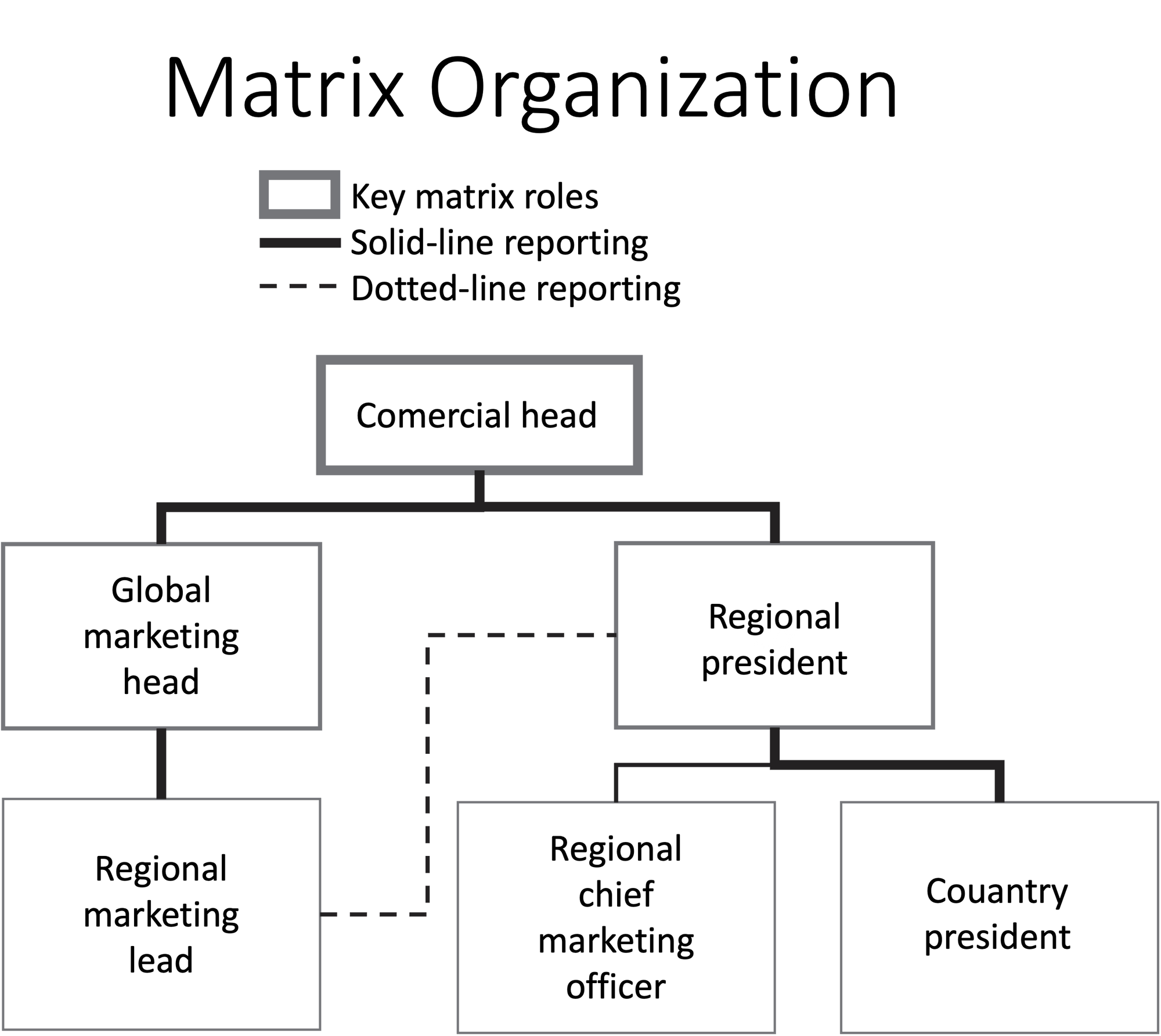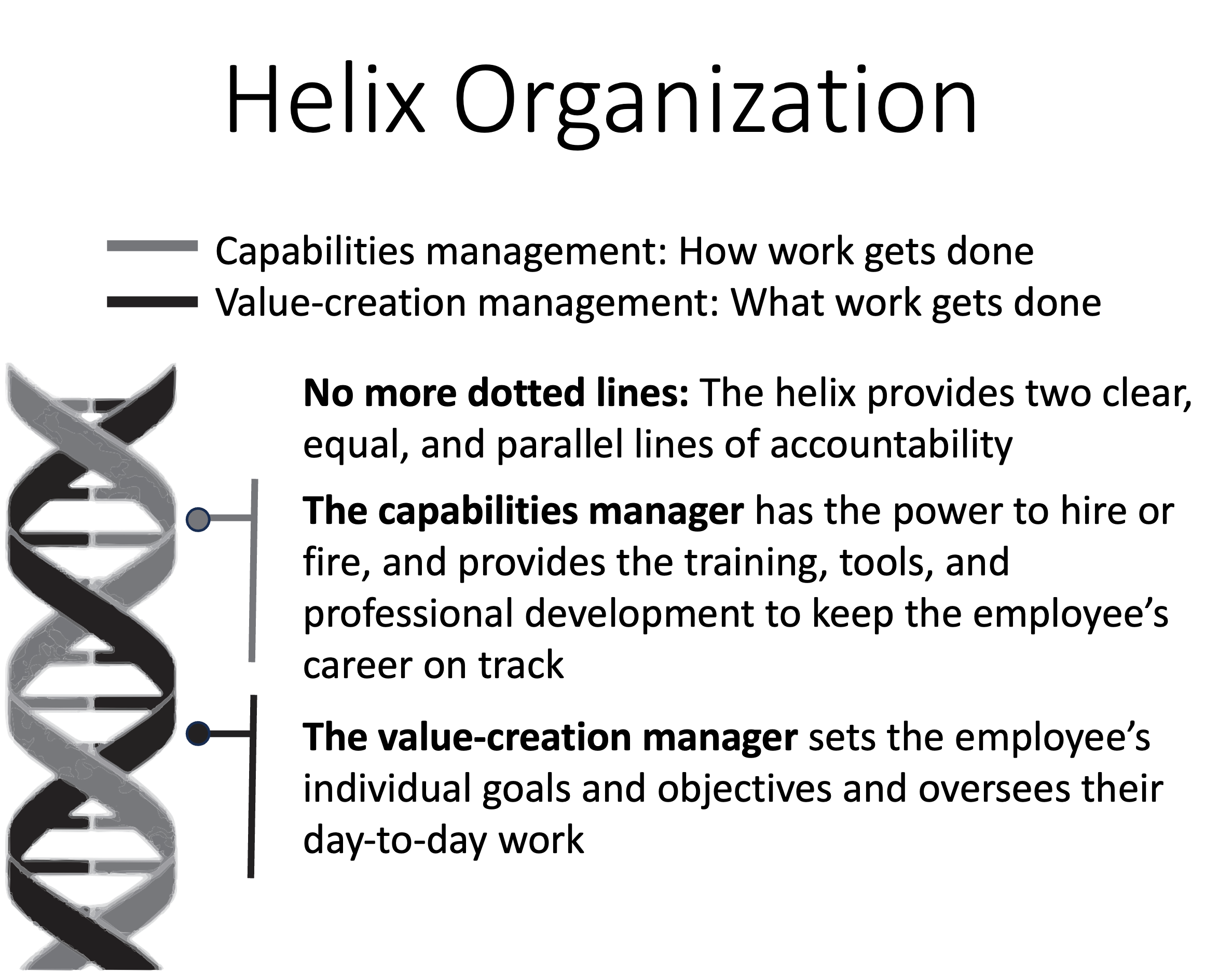Embracing the Helix: The Evolution of the Matrix Organization and its Impact on Stagility

The corporate world is no stranger to evolving organization structures. As companies grow in complexity and global reach, they have to grapple with changes in the business landscape and adopt novel approaches to organization design. Two such structures that have sparked significant interest are the matrix and helix organizations. These structures, when effectively implemented, can be pivotal to achieving 'stagility' – a blend of stability and agility, in organizations.
The Matrix Organization: A Solid Foundation
A matrix organization design features multiple reporting lines, usually categorized as 'solid-line' or 'dotted-line' reporting relationships. Employees in a matrix structure typically report to a functional leader and a project or business unit leader. This structure finds its roots in the 1960s, during President John F. Kennedy’s era, when project managers and engineering managers in the U.S. space program were tasked with dual objectives and reported to the general managers.
In a matrix organization, resources and employees are shared across different projects, thereby enhancing collaboration, fostering innovation, and reducing redundancies. Moreover, it allows for flexible allocation of resources based on business needs, creating a dynamic environment.

However, the matrix structure has been critiqued for creating confusion, slowing down decision-making processes, and giving rise to power struggles. These challenges can be mitigated by cultivating a culture of collaboration and trust, delineating clear roles and responsibilities, and establishing well-defined decision-making procedures.
From Matrix to Helix: An Evolution
While matrix organizations provide a solid foundation for complex entities, it can still be perceived as static and grid-like. To overcome these constraints, the notion of a helix organization has emerged, offering a more dynamic perspective on organizational design.

The concept of a helix organization draws inspiration from the structure of DNA – two intertwined helices connected by pairs of nucleotides. In a helix organization, the traditional 'dual hard line' or 'dotted line' reporting structure is replaced by interconnected roles and responsibilities, akin to the intertwined strands of a DNA molecule.
Rather than creating rigid hierarchies, the helix model promotes a flow of ideas and resources, fostering an environment of shared responsibility and collaboration. Employees still have dual reporting lines, but they're expected to balance and manage these responsibilities in a more fluid, flexible manner.
In the helix structure, leaders have clearly defined, yet complementary roles. Each leader's success is dependent on the other's performance, establishing a sense of interdependence and shared accountability. The collaborative nature of the helix model also aligns with the principle of 'stagility', balancing stability and agility within an organization.
Stagility: The Unifying Principle
Stagility combines the best of stability and agility, allowing organizations to be responsive to changing market conditions while maintaining their core strategic focus. Both matrix and helix structures, when effectively implemented, contribute to achieving stagility in organizations.
Matrix organizations provide a stable structure where resources and roles are clearly defined. This stability allows organizations to efficiently manage their resources, making it easier to maintain a consistent strategic direction. On the other hand, the flexibility inherent in matrix organizations - the ability to assign resources and personnel to different projects as needed - promotes agility, enabling quick adaptation to new opportunities or challenges.
The helix organization takes the benefits of the matrix structure a step further. The interconnected and flexible nature of the helix model promotes agility, enabling seamless resource flow and quick decision-making. At the same time, the shared accountability and interdependence in the helix model create a stable environment where employees have a clear understanding of their roles and responsibilities